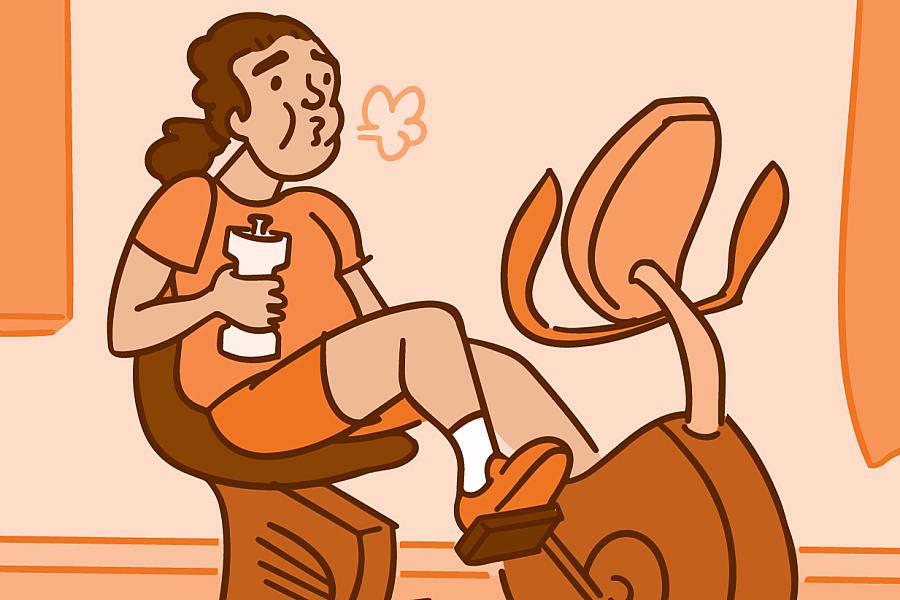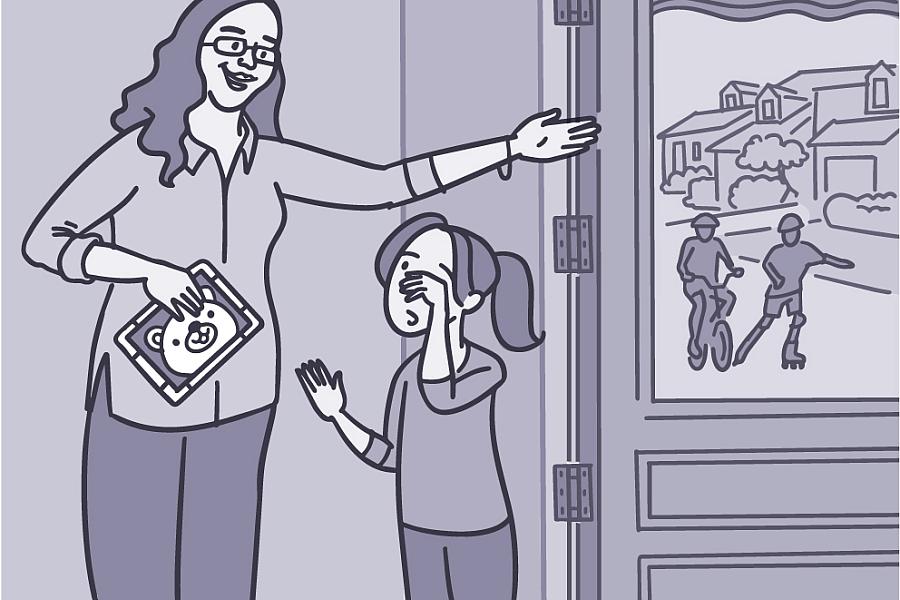Managing Pain
Moving Beyond Opioids

Most people experience some kind of pain during their lives. Pain serves an important purpose: it warns the body when it’s in danger. Think of when your hand touches a hot stove. But ongoing pain causes distress and affects quality of life. Pain is the number one reason people see a doctor.
A class of drugs called opioids is often used to treat pain. One reason, explains NIH pain expert Dr. Michael Oshinsky, is that opioids work well for many people. Opioids can stop the body from processing pain on many levels, from the skin to the brain. Because they work throughout the body, he says, “Opioids can be very effective for multiple types of pain.”
But opioids also produce feelings of happiness and well-being. And they’re reinforcing: the more people take them, the more they crave them. This can lead to addiction, or continuing to take opioids despite negative consequences. Scientists have not yet been able to develop opioids that reduce pain without producing these addicting effects, Oshinsky explains.
The longer someone takes opioids, the more they may need to take to get the same effect. This is called tolerance. Having a high tolerance doesn’t always mean you’ll become addicted. But taking higher doses of opioids increases the risk for both addiction and overdose.
The U.S. is now in the grip of an opioid crisis. Every day, more than 100 Americans die from an opioid overdose. This number includes deaths from prescription opioids.
“We don’t need ‘better’ opioids. We need to move away from the reliance on opioids for developing pain treatments,” Oshinsky says.
NIH is funding research into new and more precise ways to treat pain. It’s also working to develop new treatments to combat opioid misuse and addiction.
Opioids Not Always Needed
Opioids are often prescribed for acute pain. Acute pain is short-term pain, the kind experienced after an accident or an operation. But other drugs may be just as effective for acute pain, even after surgery, explains Dr. Dena Fischer, a dental health expert at NIH. Some of these drugs, like acetaminophen or ibuprofen, don’t require a prescription.
People may think that prescription drugs work better for acute pain. But that’s often not the case, Fischer says. Using something other than an opioid first can be especially important to manage acute pain in fields such as dentistry, she adds.
Many people receiving opioid prescriptions from dentists are teens or young adults who have never been prescribed an opioid before.
“Research is starting to tell us that people who receive an opioid prescription as a teenager have a tendency to continue to take opioids for non-medical purposes in the long term,” Fischer says.
Healthcare providers who decide their patient needs an opioid are now being encouraged to give only a few pills at a time. People who receive shorter prescriptions are less likely to misuse their pills by taking more than prescribed or taking them after the pain is gone. This also cuts down the chance that the pills could be taken by others.
When Pain Is Chronic
Managing chronic pain is more complicated than treating acute pain. More than 25 million people in the U.S. alone live with chronic pain, which is pain that lasts more than three months.
Many things can cause chronic pain. For example, Oshinsky says, a muscle that was damaged in an accident may heal relatively quickly. But if a nerve was also hurt, it can continue to send pain signals long after the body has repaired the muscle.
Other types of chronic pain are driven by brain changes, explains Dr. David Williams, an NIH-funded pain researcher at the University of Michigan. When these changes happen, the brain continues to perceive pain even though the injury has healed.
For people with this type of chronic pain, sometimes called central pain, opioids and some other kinds of pain medications can actually make the pain worse.
Research has shown that talk therapies, such as cognitive behavioral therapy, can help many people with chronic central pain. These types of therapies “emphasize behaving in different ways or thinking in different ways that alter the perception of pain,” Williams explains. “Pain is a combination of a sensory and an emotional experience.”
Cognitive behavioral therapy can also help people with chronic pain manage related health problems, such as problems sleeping, feeling tired, or trouble concentrating. This can increase quality of life for people with chronic pain. It can also have overlapping effects.
“Pain processing and sleep and thinking and mood all share the same Chemicals that send signals from one nerve cell to another. neurotransmitters in the brain,” Williams says. “So, by improving something like sleep, you’re also improving pain.”
Non-opioid drugs can help some people with chronic pain too, Oshinsky says. Many of these drugs were first developed to treat different health conditions, such as seizures, depression, or anxiety. But they can also change the way the brain processes pain.
Some people benefit from devices that stimulate the nerves directly to block pain signals from reaching the brain, Oshinsky adds. Different devices can work on different parts of the nervous system, from the nerves in the skin to the spinal cord.
People with certain types of pain have also been shown to benefit from exercise, acupuncture, massage therapy, or yoga.
Expanding the Options
The alternatives to opioids we have now don’t work for everyone’s pain. More non-opioid, non-addictive treatment options could help reduce the number of opioids prescribed each year.
Recently, NIH launched the Helping to End Addiction Long-Term (HEAL) Initiative to address the shortage of effective medications for chronic pain and other issues contributing to the opioid crisis.
Some of the research funded by HEAL will focus on understanding how chronic pain develops. A better understanding of how acute pain becomes chronic could reveal new treatment targets.
Researchers funded by HEAL also hope to learn how to predict who will develop chronic pain from acute pain. This information could be used to guide early pain management, Oshinsky explains. HEAL will fund research into new treatments for opioid misuse and addiction as well.
More options for pain management could help doctors better personalize pain treatment. “It could be a little more like precision medicine, where you try to identify what flavor of pain the patient has, and then match the treatments we have available to the needs of that patient,” Williams explains.
NIH Office of Communications and Public Liaison
Building 31, Room 5B52
Bethesda, MD 20892-2094
nihnewsinhealth@od.nih.gov
Tel: 301-451-8224
Editor:
Harrison Wein, Ph.D.
Managing Editor:
Tianna Hicklin, Ph.D.
Illustrator:
Alan Defibaugh
Attention Editors: Reprint our articles and illustrations in your own publication. Our material is not copyrighted. Please acknowledge NIH News in Health as the source and send us a copy.
For more consumer health news and information, visit health.nih.gov.
For wellness toolkits, visit www.nih.gov/wellnesstoolkits.




